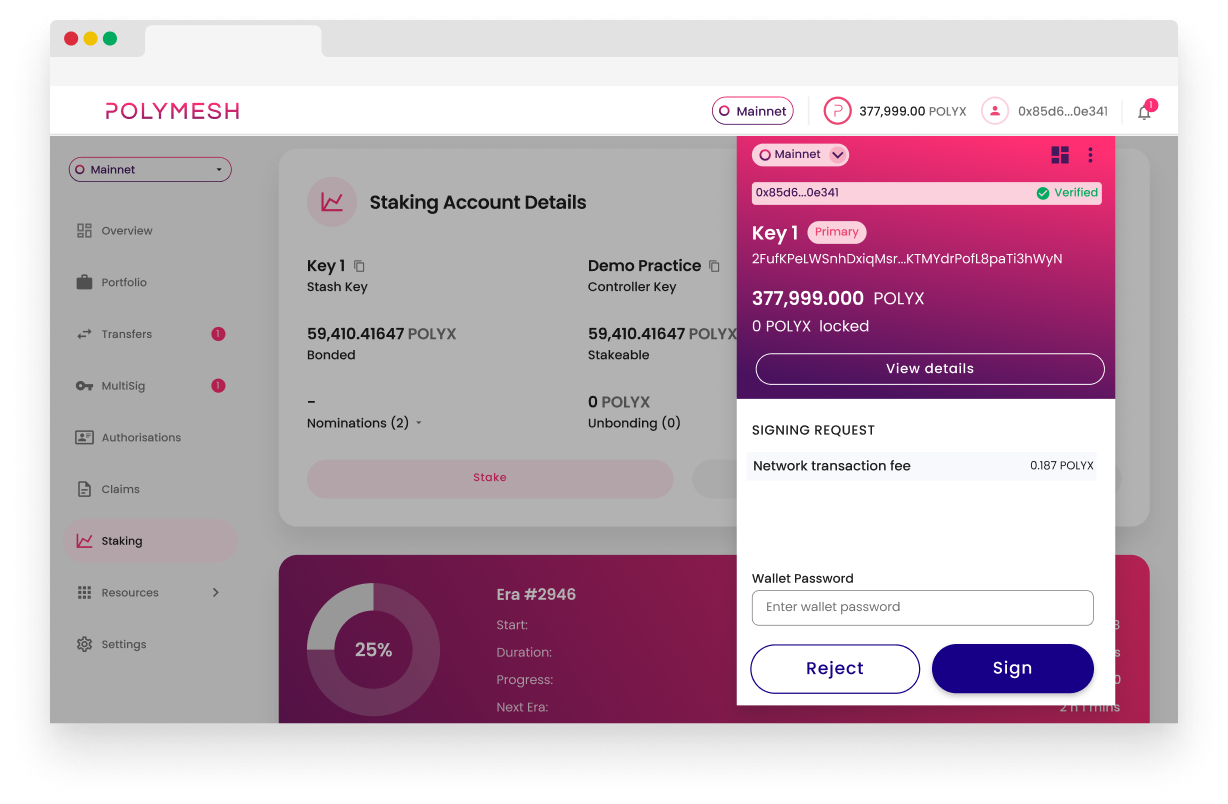Stake POLYX on Polymesh node operators to help secure the blockchain and earn rewards.

Crypto staking is an important aspect of the nominated proof-of-stake consensus mechanism, which defines which blocks get written to the blockchain as well as the blockchain network's roles, rules, and incentives.
Stake your crypto to enhance the security of the blockchain network. Staking cryptocurrencies aligns the economic incentives of node operators and stakers to the correct operation of the blockchain through rewards and penalties denominated in crypto assets.
Polymesh offers staking to any POLYX token holder whose identity has been verified through the blockchain's customer due diligence process. Polymesh stakers earn rewards in the form of the blockchain's crypto utility token POLYX.

Stakers back node operators of their choice with the POLYX token to be rewarded on the node operator’s performance (i.e. keeping their validator node online; writing transactions on the blockchain per its rules). Staked POLYX can also be used to signal support in Polymesh governance.
Who are node operators?
Set the amount of POLYX tokens you wish to stake and select the node operators you wish to stake your crypto on. Changing your stake may take up to 1 day to update, and any amount of unstaked POLYX will be locked in your wallet for 28 days.

Stake POLYX on node operators to increase your chance of receiving POLYX token rewards. Only the top 2,048 stakers per operator will receive rewards.

Earn staking rewards in the form of Polymesh's crypto utility token POLYX when one or more operators you have staked validate transactions via the block-writing operating pool. Your total staking pool will be distributed across these active operators.

Nominated proof-of-stake on Polymesh defines how node operators (known as validators on other networks) are allowed to participate in the blockchain's consensus protocol and validate transactions in the form of new blocks. It keeps the blockchain highly secure by only permitting node operators with the highest amounts of stake to validate blocks.
Nominated proof-of-stake makes it harder for a single adversary to attack the blockchain since it takes considerable reputation to build up stake. It also makes attacking the system costly since such behaviour results in staked cryptocurrencies being slashed.
Block rewards and fines are essential to the nominated Proof-of-Stake consensus mechanism and proper operation of the blockchain.
For each block created, the node operator who authored it is rewarded in POLYX and gives a cut to their stakers. However, failure to meet performance standards of the blockchain can lead to node operators being fined in POLYX. Stakers may also be fined pending Governance Council approval.
Rewards and fines are calculated and enacted per era (every 24 hours).